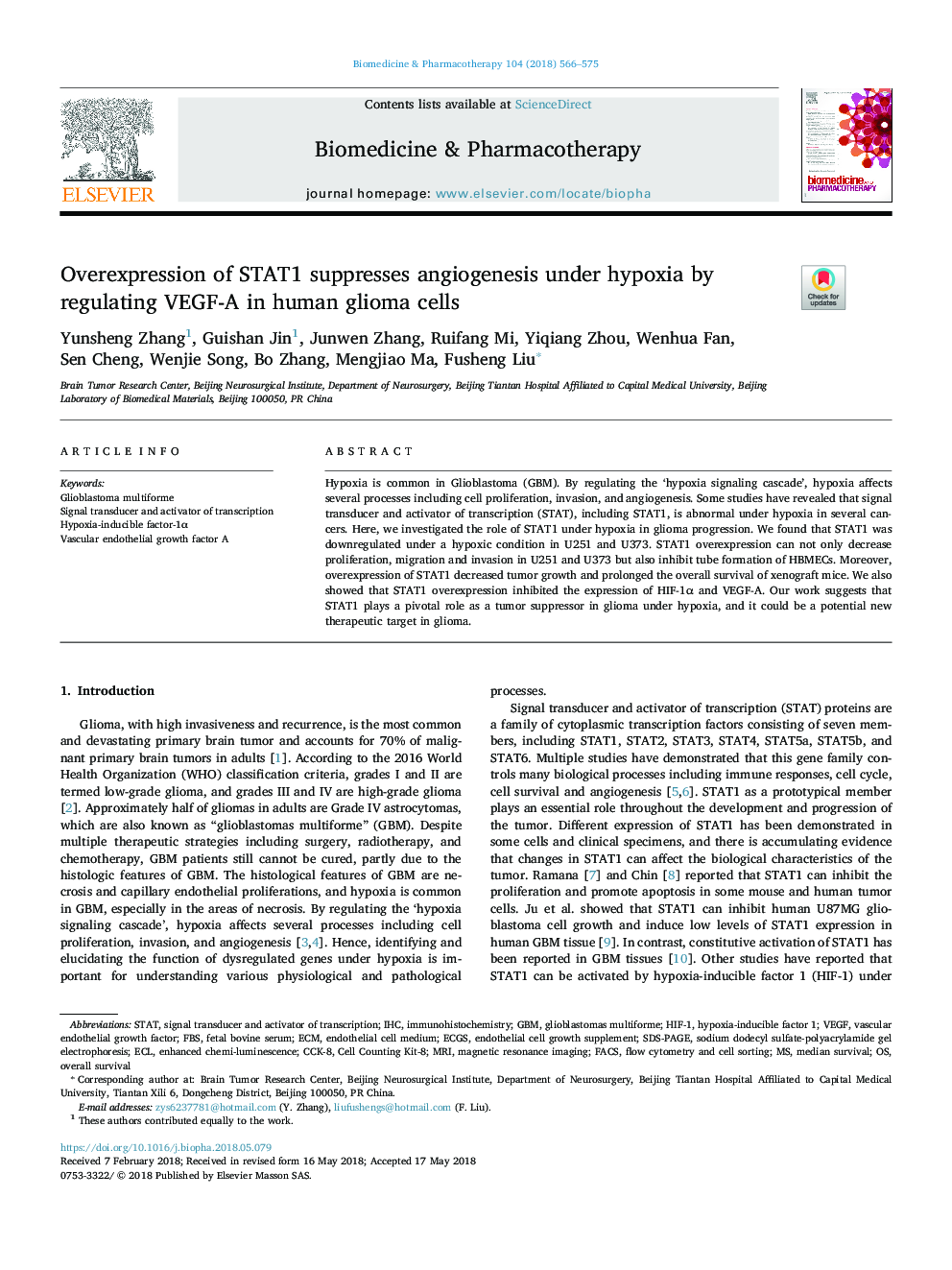| Article ID | Journal | Published Year | Pages | File Type |
|---|---|---|---|---|
| 8525166 | Biomedicine & Pharmacotherapy | 2018 | 10 Pages |
Abstract
Hypoxia is common in Glioblastoma (GBM). By regulating the 'hypoxia signaling cascade', hypoxia affects several processes including cell proliferation, invasion, and angiogenesis. Some studies have revealed that signal transducer and activator of transcription (STAT), including STAT1, is abnormal under hypoxia in several cancers. Here, we investigated the role of STAT1 under hypoxia in glioma progression. We found that STAT1 was downregulated under a hypoxic condition in U251 and U373. STAT1 overexpression can not only decrease proliferation, migration and invasion in U251 and U373 but also inhibit tube formation of HBMECs. Moreover, overexpression of STAT1 decreased tumor growth and prolonged the overall survival of xenograft mice. We also showed that STAT1 overexpression inhibited the expression of HIF-1α and VEGF-A. Our work suggests that STAT1 plays a pivotal role as a tumor suppressor in glioma under hypoxia, and it could be a potential new therapeutic target in glioma.
Keywords
HIF-1EcGSGBMECLECMFBSFACSCCK-8STATsodium dodecyl sulfate-polyacrylamide gel electrophoresisSDS-PAGEMRIImmunohistochemistryIHCmedian survivaloverall survivalMagnetic resonance imagingfetal bovine serumcell counting kit-8hypoxia-inducible factor-1αhypoxia-inducible factor 1Vascular endothelial growth factorVascular Endothelial Growth Factor (VEGF)Vascular endothelial growth factor ASignal transducer and activator of transcriptionendothelial cell mediumendothelial cell growth supplementGlioblastoma multiforme
Related Topics
Health Sciences
Medicine and Dentistry
Oncology
Authors
Yunsheng Zhang, Guishan Jin, Junwen Zhang, Ruifang Mi, Yiqiang Zhou, Wenhua Fan, Sen Cheng, Wenjie Song, Bo Zhang, Mengjiao Ma, Fusheng Liu,
